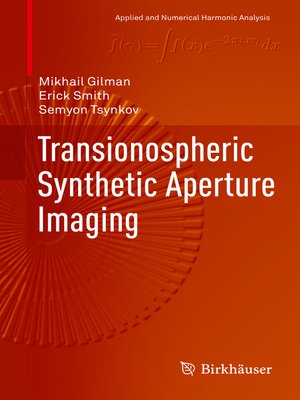Transionospheric Synthetic Aperture Imaging
ebook ∣ Applied and Numerical Harmonic Analysis
By Mikhail Gilman

Sign up to save your library
With an OverDrive account, you can save your favorite libraries for at-a-glance information about availability. Find out more about OverDrive accounts.
Find this title in Libby, the library reading app by OverDrive.



Search for a digital library with this title
Title found at these libraries:
| Library Name | Distance |
|---|---|
| Loading... |
This landmark monograph presents the most recent mathematical developments in the analysis of ionospheric distortions of SAR images and offers innovative new strategies for their mitigation. As a prerequisite to addressing these topics, the book also discusses the radar ambiguity theory as it applies to synthetic aperture imaging and the propagation of radio waves through the ionospheric plasma, including the anisotropic and turbulent cases. In addition, it covers a host of related subjects, such as the mathematical modeling of extended radar targets (as opposed to point-wise targets) and the scattering of radio waves off those targets, as well as the theoretical analysis of the start-stop approximation, which is used routinely in SAR signal processing but often without proper justification.
The book is intended for applied mathematicians interested in the area of radar imaging or, more generally, remote sensing, as well as physicists and electrical/electronic engineers who develop/operate spaceborne SAR sensors and perform the data processing. The methods in the book are also useful for researchers and practitioners working on other types of imaging. Moreover, the book is accessible to graduate students in applied mathematics, physics, engineering, and related disciplines.
Praise for Transionospheric Synthetic Aperture Imaging:
"I perceive that this text will mark a turning point in the field of synthetic aperture radar research and practice. I believe this text will instigate a new era of more rigorous image formation relieving the research, development and practitioner communities of inconsistent physical assumptions and numerical approaches." – Richard Albanese, Senior Scientist, Albanese Defense and Energy Development LLC







